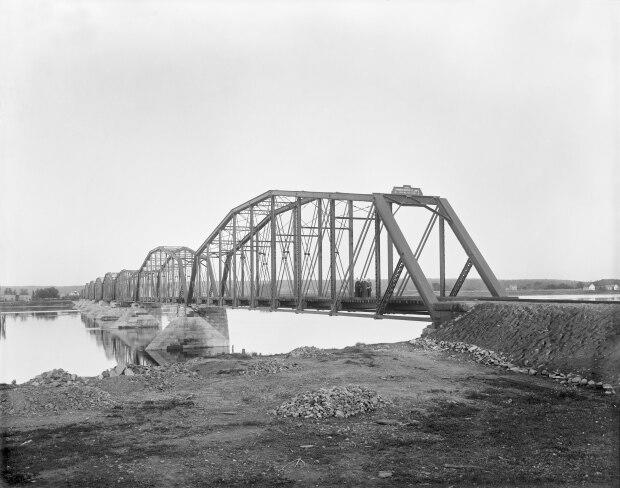How the closure of Bill Thorpe Walking Bridge will affect your commute

If you're planning to cross the Bill Thorpe Walking Bridge today, you'd better stop and turn around.
Construction on the former train bridge in Fredericton starts Wednesday and will continue for four months.
The $3.9-million project is expected to finish by mid-January, but the work is weather-dependent.
For several weeks, crews have been doing preliminary work to get the bridge across the St. John River ready for the closure.
"Starting on Wednesday, they get into more of the demolition," said Sean Lee, the city's assistant director of engineering and operations.
"What they're going to start doing is closing the bridge and then starting to remove railings, cutting sections of deck, starting to do some of the heavy work that needs to happen on the bridge itself."
What needs fixing?

In late September and early October, they will start removing sections of the deck in large pieces.
Lee said the original railway ties are starting to deteriorate. That's because water over the years has caused them to become "soft and spongy."
As a result, the entire deck and ties need to be stripped away.
"You can feel it a little bit when you're crossing the bridge itself," he said.
The city will install modular pieces of concrete tied with steel railings and a new wood deck.
For the past few months, modular sections of what will be the new bridge have been fabricated off site.
Lee said 287 concrete panels have been manufactured, along with 250 wooden deck panels and 500 railing sections.
Where to go from here
The bridge sees about 600,000 pedestrian crossings each year.
The closure of the bridge will shut down a major part of the city's walking trail, which means anybody who wants to walk to the other side of the river will need to use the sidewalk on the Westmorland Street Bridge.
Meanwhile, Fredericton Transit will continue to offer services to and from the downtown at the Union Street stop, adjacent to the bridge and Picaroons brewery on the north side.
The finished product will look similar to how it looks today, with a few minor changes.
"The underneath work will be a concrete superstructure that will tie to the bridge," Lee said. "And that concrete will have the same life as the bridge itself."

There will also be vertical metal railings that are spaced out, so people can see out onto the St. John River, instead of the horizontal boards that are there now.
"If you're a child … you can actually look out and see the river from the deck itself," he said.
A little bit of history

The bridge was built in 1938 as a train bridge, replacing one built in 1889 that was damaged by ice and flooding in March 1935, according to the city's website.
The last freight train crossed in 1996, and the 580-metre structure became a pedestrian bridge the following year.
Upgrades were originally expected during the fall 2018 construction season, but plans were put on hold until this year, after the Harvest Jazz & Blues Festival.

For years, the historic bridge has been in need of major repairs, and the city has been looking at different ways to fix it.
In 2017, viewing platforms on the bridge were closed after the city's parks and trees division found rot on the railings.
A loose railing on one of the lookout platforms was also discovered.

The $3.9-million bill for the bridge repairs will be shared equally by the federal, provincial and city governments.
Once construction is completed, the city says the bridge will require only minor maintenance for at least 75 years.
"Going ahead, we'll have a functional bridge for many, many years," Lee said.


